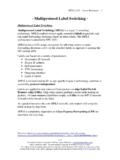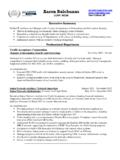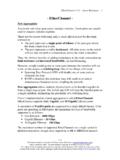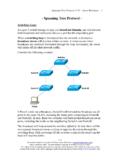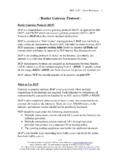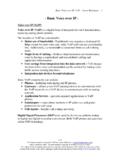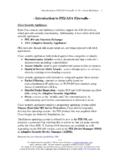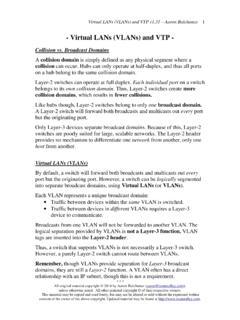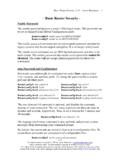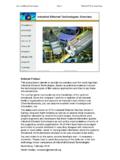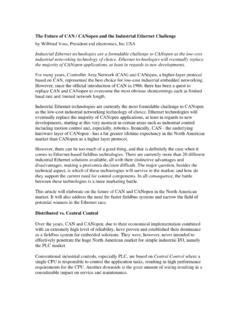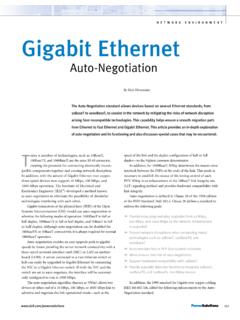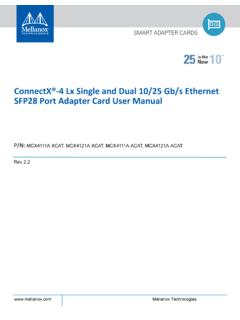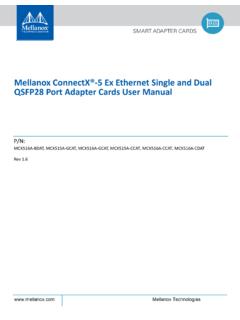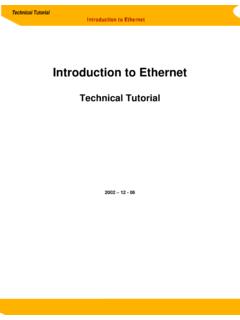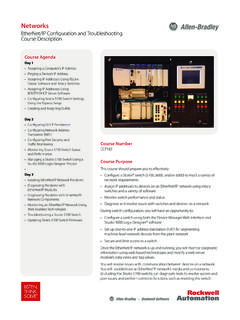Transcription of Ethernet Technologies - Router Alley
1 Ethernet Technologies Aaron Balchunas * * * All original material copyright 2012 by Aaron Balchunas unless otherwise noted. All other material copyright of their respective owners. This material may be copied and used freely, but may not be altered or sold without the expressed written consent of the owner of the above copyright. Updated material may be found at 1 - Ethernet Technologies - What is Ethernet ? Ethernet is a family of Technologies that provides data-link and physical specifications for controlling access to a shared network medium. It has emerged as the dominant technology used in LAN networking.
2 Ethernet was originally developed by Xerox in the 1970s, and operated at The technology was standardized as Ethernet Version 1 by a consortium of three companies - DEC, Intel, and Xerox, collectively referred to as DIX - and further refined as Ethernet II in 1982. In the mid 1980s, the Institute of Electrical and Electronic Engineers (IEEE) published a formal standard for Ethernet , defined as the IEEE standard. The original Ethernet operated at 10 Mbps, and successfully supplanted competing LAN Technologies , such as Token Ring. Ethernet has several benefits over other LAN Technologies : Simple to install and manage Inexpensive Flexible and scalable Easy to interoperate between vendors (References: ; ) Ethernet Cabling Types Ethernet can be deployed over three types of cabling: Coaxial cabling almost entirely deprecated in Ethernet networking Twisted-pair cabling Fiber optic cabling Coaxial cable, often abbreviated as coax, consists of a single wire surrounded by insulation, a metallic shield, and a plastic sheath.
3 The shield helps protect against electromagnetic interference (EMI), which can cause attenuation, a reduction of the strength and quality of a signal. EMI can be generated by a variety of sources, such as florescent light ballasts, microwaves, cell phones, and radio transmitters. Coax is commonly used to deploy cable television to homes and businesses. Ethernet Technologies Aaron Balchunas * * * All original material copyright 2012 by Aaron Balchunas unless otherwise noted. All other material copyright of their respective owners. This material may be copied and used freely, but may not be altered or sold without the expressed written consent of the owner of the above copyright.
4 Updated material may be found at 2 Ethernet Cabling Types (continued) Two types of coax were used historically in Ethernet networks: Thinnet Thicknet Thicknet has a wider diameter and more shielding, which supports greater distances. However, it is less flexible than the smaller thinnet, and thus more difficult to work with. A vampire tap is used to physically connect devices to thicknet, while a BNC connector is used for thinnet. Twisted-pair cable consists of two or four pairs of copper wires in a plastic sheath. Wires in a pair twist around each other to reduce crosstalk, a form of EMI that occurs when the signal from one wire bleeds or interferes with a signal on another wire.
5 Twisted-pair is the most common Ethernet cable. Twisted-pair cabling can be either shielded or unshielded. Shielded twisted-pair is more resistant to external EMI; however, all forms of twisted-pair suffer from greater signal attenuation than coax cable. There are several categories of twisted-pair cable, identified by the number of twists per inch of the copper pairs: Category 3 or Cat3 - three twists per inch. Cat5 - five twists per inch. Cat5e - five twists per inch; pairs are also twisted around each other. Cat6 six twists per inch, with improved insulation. An RJ45 connector is used to connect a device to a twisted-pair cable.
6 The layout of the wires in the connector dictates the function of the cable. While coax and twisted-pair cabling carry electronic signals, fiber optics uses light to transmit a signal. Ethernet supports two fiber specifications: Singlemode fiber consists of a very small glass core, allowing only a single ray or mode of light to travel across it. This greatly reduces the attenuation and dispersion of the light signal, supporting high bandwidth over very long distances, often measured in kilometers. Multimode fiber consists of a larger core, allowing multiple modes of light to traverse it. Multimode suffers from greater dispersion than singlemode, resulting in shorter supported distances.
7 Singlemode fiber requires more precise electronics than multimode, and thus is significantly more expensive. Multimode fiber is often used for high-speed connectivity within a datacenter. Ethernet Technologies Aaron Balchunas * * * All original material copyright 2012 by Aaron Balchunas unless otherwise noted. All other material copyright of their respective owners. This material may be copied and used freely, but may not be altered or sold without the expressed written consent of the owner of the above copyright. Updated material may be found at 3 Network Topologies A topology defines both the physical and logical structure of a network.
8 Topologies come in a variety of configurations, including: Bus Star Ring Full or partial mesh Ethernet supports two topology types bus and star. Ethernet Bus Topology In a bus topology, all hosts share a single physical segment (the bus or the backbone) to communicate: A frame sent by one host is received by all other hosts on the bus. However, a host will only process a frame if it matches the destination hardware address in the data-link header. Bus topologies are inexpensive to implement, but are almost entirely deprecated in Ethernet . There are several disadvantages to the bus topology: Both ends of the bus must be terminated, otherwise a signal will reflect back and cause interference, severely degrading performance.
9 Adding or removing hosts to the bus can be difficult. The bus represents a single point of failure - a break in the bus will affect all hosts on the segment. Such faults are often very difficult to troubleshoot. A bus topology is implemented using either thinnet or thicknet coax cable. Ethernet Technologies Aaron Balchunas * * * All original material copyright 2012 by Aaron Balchunas unless otherwise noted. All other material copyright of their respective owners. This material may be copied and used freely, but may not be altered or sold without the expressed written consent of the owner of the above copyright.
10 Updated material may be found at 4 Ethernet Star Topology In a star topology, each host has an individual point-to-point connection to a centralized hub or switch: A hub provides no intelligent forwarding whatsoever, and will always forward every frame out every port, excluding the port originating the frame. As with a bus topology, a host will only process a frame if it matches the destination hardware address in the data-link header. Otherwise, it will discard the frame. A switch builds a hardware address table, allowing it to make intelligent forwarding decisions based on frame (data-link) headers.

